Table of contents
- 1. PAKSIW NA BANGUS
- 2. ADOBO
- 3. CHICKEN CURRY
- 4. SINIGANG NA BANGUS
- 5. BEEF CALDERETA
- 6. LUMPIANG SHANGHAI
- 7. PANCIT BIHON
- 8. BISTEK TAGALOG
- 9. KARE-KARE
- 10. PINAKBET
- 11. CENTURY TUNA
- 12. GINATAANG TILAPIA
- 13. CHICKEN INASAL
- 14. DAING NA BONELESS BANGUS
- 15. BICOL EXPRESS
- 16. LAING
- 17. FRIED HOTDOGS AND INSTANT NOODLES
- 18. TINOLANG MANOK
- 19. TAPSILOG
- 20. TOKWA’T BABOY
- HOW TO COOK TOKWA’T BABOY
- 21. PRITONG GALUNGONG
- 22. ANGEL’S PIZZA
- 23. PANCIT CANTON GISADO
- 24. CHOP SUEY
- 25. Sizzling Teriyaki Squid
- 26. Pansit ng Tuguegarao
- 27. GINATAANG TILAPIA WITH PECHAY
- 28. CHICKEN PASTIL
- 29.GINATAANG YELLOWFIN TUNA
- 30. BEEF AMPALAYA
- 31. TINOLANG ISDA
- 32. SARCIADONG PAMPANO
- 33. Chicken Tocino
Welcome to a tantalizing journey through the flavors of Filipino cuisine! In this section, we will delve into a variety of mouthwatering Filipino recipes that will provide you with Pinoy ulam ideas for your next meal. From traditional favorites to unique creations, Filipino cuisine offers a range of delectable dishes that are sure to satisfy your cravings.
Filipino food is known for its bold and savory flavors, incorporating a diverse range of ingredients such as garlic, vinegar, soy sauce, coconut milk, and tropical fruits. With influences from various cultures, Filipinos have created a culinary heritage that is both rich in tradition and remarkably delicious.
Whether you’re an avid cook seeking new recipes or simply someone curious about exploring the flavors of Filipino food, we have you covered. Our selection of Pinoy ulam ideas includes beloved classics like adobo, sinigang, and kare-kare, as well as innovative dishes like pineapple chicken afritada and ginataang kalabasa at sitaw.
Prepare to embark on a culinary adventure that celebrates the vibrant and diverse Filipino cuisine. Let’s indulge in the irresistible flavors and mouthwatering aromas that make Filipino food a beloved part of Pinoy culture!
Introduction to Filipino Cuisine and Its Savory Staples
Filipino cuisine is a vibrant and diverse culinary tradition that reflects the rich cultural heritage of the Philippines. With a unique blend of flavors and ingredients, Filipino dishes have gained popularity worldwide for their bold and savory profiles. In this section, we will delve into the significance of ulam in Filipino culture and explore some traditional Filipino dishes that have become staples in Filipino households.
The Significance of Ulam in Filipino Culture
Ulam, which translates to “main dish” in Filipino, holds a special place in Filipino culture as it forms the foundation of every Filipino meal. It is the heart of the dining experience and is often shared among family and friends. Ulam signifies nourishment and unity, with its presence bringing people together to enjoy a delicious and satisfying meal.
Ulam in Filipino culture goes beyond just satisfying hunger; it represents the deep connection Filipinos have with their food and heritage. Each ulam carries a story, tradition, and memories that are passed down through generations. It is a way to preserve and celebrate Filipino culinary traditions, ensuring the flavors and techniques are not lost over time.
Furthermore, ulam showcases the diverse flavors and ingredients found across the Philippines. With a variety of regional cuisines, ulam reflects the different cultural influences that have shaped Filipino cuisine throughout history. From the tangy and savory flavors of the Visayas to the rich and spicy dishes of Bicol, ulam represents the culinary diversity that makes Filipino cuisine so unique.
Traditional Filipino any traditional Filipino dishes that you can explore and enjoy. Each dish has its own unique combination of flavors and ingredients, providing a delightful culinary experience.
1. PAKSIW NA BANGUS
The popular Filipino meal paksiw na bangus is made with milkfish, also known as bangus, and is cooked in vinegar, garlic, ginger, and other spices. The word “paksiw” in Filipino means “to cook and stew in vinegar.” The primary component that gives the cuisine its distinctively sour flavor is vinegar.
INGREDIENTS OF PAKSIW NA BANGUS
- 1 large bangus (milkfish)
- 1 medium eggplant
- 4 garlic cloves
- 1 onion
- 1 large green siling haba
- 1 thumb-size ginger
- 1/2 cup vinegar
- 1 cup water
- 1 teaspoon peppercorns
- 1 teaspoon salt
HOW TO COOK PAKSIW NA BANGUS
- Cut the fish in 4 parts
- In a wide pot combine all ingredients
- Cover and let simmer for about 15 minutes.
2. ADOBO
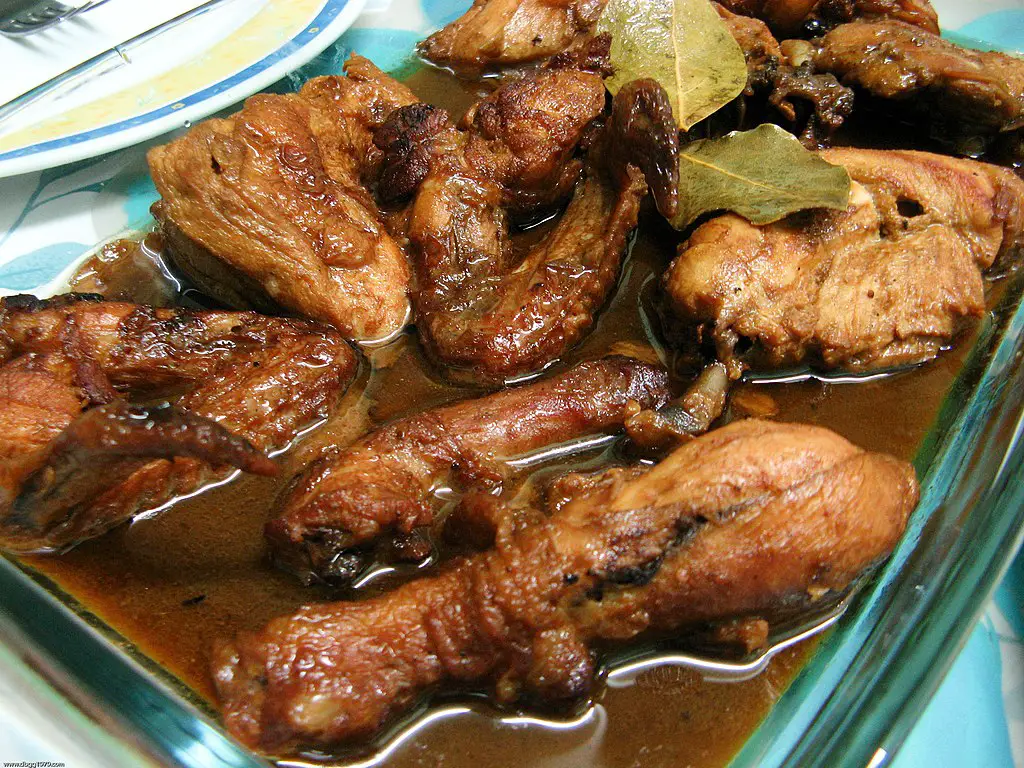
INGREDIENTS OF ADOBO
- Chicken, pork, beef, fish, squid, or vegetables
- Vinegar
- Soy sauce
- Garlic
- Bay leaves
- Black peppercorns
HOW TO COOK ADOBO
- Combine all the ingredients, then marinate. The marinating process aids in flavoring and tenderizing the meat.
- Cook the meat over medium heat until it is tender.
- Serve with rice.
3. CHICKEN CURRY
INGREDIENTS OF CHICKEN CURRY
- Chicken
- Potato
- Carrot
- Red bell pepper
- Green bell pepper
- Onion
- Garlic
- Coconut milk
- Curry powder
- Salt
- Black pepper
- Cooking oil
HOW TO COOK CHICKEN CURRY
- In a large pot or deep pan, heat the cooking oil over medium heat.
- Sauté the onion and garlic.
- Add the chicken pieces and cook until they turn golden brown.
- Add the curry powder and mix well.
- Pour in the coconut milk and bring to a boil.
- Add the potatoes and carrots, and simmer until they are almost tender.
- Add the red and green bell peppers, and cook,
- Season with salt and black pepper.
- Serve hot with steamed rice.
4. SINIGANG NA BANGUS
Sinigang na bangus, a warm, sour soup, is a common dish in the Philippines, especially during the rainy season or on chilly days since it is believed to help prevent colds and the flu. The dish is particularly nourishing due to the high vitamin content of the fish and vegetables. This dish is includes milkfish (bangus) and a sour broth typically seasoned with tamarind (sampalok) or other sour spices like kamias, guava, or calamansi. To make the vegetable-rich soup, kangkong, tomatoes, onions, and radishes are used. It is served with hot rice.
INGREDIENTS OF SINIGANG NA BANGUS
- 2 medium-sized bangus, cleaned and sliced into serving pieces
- 1 medium-sized onion, sliced
- 2 medium-sized tomatoes, sliced
- 2-3 pieces long green chili pepper (siling pansigang)
- 1 pack sinigang mix (tamarind soup base)
- 1 liter of water
- 2 cups of kangkong (water spinach), washed and cut into 2-inch pieces
- 1 medium-sized radish, peeled and sliced
- 1 medium-sized eggplant, sliced
- Salt and pepper to taste
HOT TO COOK SINIGANG NA BANGUS
- In a large pot, sauté the onions and tomatoes.
- Add the water and bring it to a boil.
- Add the sinigang mix and stir.
- Add the sliced bangus and bring to a boil. Let it simmer for 5 minutes.
- Add the sliced radish and eggplant. Simmer for another 5 minutes.
- Add the long green chili pepper and the kangkong.
- Season with salt and pepper to taste.
- Simmer for another 3-5 minutes until the vegetables until cooked.
- Remove from heat and serve hot with steamed rice.
5. BEEF CALDERETA
Beef caldereta, a popular Filipino meal, stands out for its tender beef chunks cooked in a thick tomato-based sauce with vegetables including potatoes, carrots, and bell peppers. It is usually offered at special gatherings and celebrations and goes well with rice. To give the dish the desired level of heat, chili peppers or hot sauce can be added. In certain variations of the recipe, the beef is swapped out for goat or lamb, and cheese or olives might also be added.
INGREDIENTS OF BEEF CALDERETA
- 1 kg beef meat, cut into chunks
- 1 large onion, diced
- 4 cloves garlic, minced
- 2 medium-sized carrots, peeled and sliced
- 3-4 medium-sized potatoes, peeled and quartered
- 1 red or green bell pepper, sliced
- 1 cup tomato sauce
- 1/4 cup liver spread
- 2 tablespoons soy sauce
- 2 bay leaves
- 2-3 tablespoons vinegar
- 1 teaspoon paprika
- 1 teaspoon sugar
- 1 cup beef broth or water
- Cooking oil
- Salt and pepper to taste
HOW TO COOK BEEF CALDERETA
- Heat some oil in a large pot.
- Add the beef chunks and cook until browned on all sides.
- Remove the beef from the pot and set aside.
- In the same pot, sauté the garlic and onions until fragrant.
- Add the tomato sauce, liver spread, soy sauce, vinegar, bay leaves, paprika, sugar, and beef broth or water to the mixture. Mix well.
- Add the meat and simmer until it is cooked.
- Add the bell pepper, potatoes, and carrots to the pot and boil until the veggies are tender and the sauce is thick.
- Add more broth or water as needed to reach your desired consistency.
- Season with salt and pepper to taste.
- Serve hot with steamed rice.
6. LUMPIANG SHANGHAI
Lumpiang Shanghai, a type of spring roll popular in the Philippines, is frequently filled with ground beef or pork, vegetables, and seasonings. After being tightly wrapped with the filling, the lumpia wrapper is deep-fried until crispy and browned. A sweet chili sauce or banana ketchup is frequently offered for dipping, and it is occasionally served as lunch or a snack.

INGREDIENTS OF LUMPIANG SHANGHAI
- 1 lb. beef of ground pork
- 1/2 cup onion, minced
- 1/2 cup carrot, minced
- 1/2 cup celery, minced
- 2 cloves garlic, minced
- 1/2 cup green onion, minced
- 2 tbsp soy sauce
- 1/2 tsp black pepper
- 1 tbsp oyster sauce
- 1 tsp salt
- Lumpia wrappers
- Oil for frying
HOW TO COOK LUMPIANG SHANGHAI
- In a large bowl, combine ground pork, onion, carrot, celery, green onion, garlic, soy sauce, oyster sauce, salt, and black pepper. Mix well.
- Take a lumpia wrapper and place a spoonful of the pork mixture at the bottom corner of the wrapper. Roll it up tightly, tucking in the sides as you go.
- Repeat until all the pork mixture is used up.
- Heat oil in a frying pan over medium-high heat.
- Once the oil is hot, carefully add the lumpia rolls into the pan. Fry until golden brown on all sides, turning occasionally.
- Remove from the pan and drain on a paper towel-lined plate.
- Serve hot with sweet chili sauce or banana ketchup for dipping.
7. PANCIT BIHON
The tasty and satisfying dish pancit bihon is perfect for every meal of the day, including lunch. The dinner has a pleasant crunch from the chicken and vegetables, and the silky, tender noodles. The meal has a superb umami taste because of the soy sauce and oyster sauce. Pancit bihon is typically cooked in a wok or large pan over high heat, which allows the ingredients to cook quickly and retain their crispness. The dish is also versatile and can be customized to suit different preferences by using different meats, seafood, or vegetables.
INGREDIENTS OF PANCIT BIHON
- 250g bihon noodles (thin rice noodles)
- 250g chicken breast, sliced into small pieces
- 1 medium-sized carrot, sliced into thin strips
- 1 medium-sized onion, chopped
- 2 cloves garlic, minced
- 2 tbsp cooking oil
- 1/4 cup soy sauce
- 1/4 cup oyster sauce
- 4 cups water
- 1/2 cup green onions, chopped
- Salt and pepper to taste
HOW TO COOK PANCIT BIHON
- In a large pan or wok, heat the cooking oil over medium-high heat. Add the garlic and onion and sauté for 1-2 minutes until fragrant.
- Add the sliced chicken breast and stir-fry for 5-7 minutes until the chicken is cooked through.
- Add the sliced carrot and continue stir-frying for another 3-5 minutes until the carrot is tender.
- Pour in the soy sauce, oyster sauce, and water. Bring to a boil and then reduce the heat to low.
- Add the bihon noodles and stir-fry until the noodles are fully cooked and have absorbed the liquid.
- Add salt and pepper to taste.
- Garnish with chopped green onions before serving.
8. BISTEK TAGALOG
Bistek Tagalog is a classic Filipino dish that features thin slices of beef cooked in a mixture of soy sauce, calamansi juice (or lemon juice), onions, and garlic. Here’s a recipe to make Bistek Tagalog:
INGREDIENTS OF BISTEK TAGALOG
- 1 pound of beef sirloin, sliced thinly
- 3 tablespoons of soy sauce
- 3 tablespoons of calamansi juice (or lemon juice)
- 1/4 cup of water
- 1 teaspoon of sugar
- 1/2 teaspoon of ground black pepper
- 1 large onion, sliced into rings
- 3 cloves of garlic, minced
- 2 tablespoons of cooking oil
HOW TO COOK BISTEK TAGALOG
- Marinate the beef slices in a mixture of soy sauce, calamansi juice, water, sugar, and black pepper for at least 30 minutes.
- In a pan, heat the cooking oil over medium-high heat. Add the sliced onions and sauté until they become translucent.
- Add the minced garlic and sauté for another minute until fragrant.
- Add the marinated beef slices to the pan and cook until browned on both sides, about 2-3 minutes per side.
- Pour the remaining marinade into the pan and bring it to a boil. Reduce the heat and let it simmer for a few minutes until the sauce thickens.
- Serve the Bistek Tagalog with steamed rice and garnish with additional sliced onions and calamansi wedges.
9. KARE-KARE
Kare-Kare is a traditional Filipino stew that is a household and restaurant favorite. The rich and flavorful sauce is made from ground peanuts and is frequently thickened with rice flour. The stew also includes a variety of vegetables, including eggplant, pechay (bok choy), and banana blossom, which give it a distinct flavor and texture.
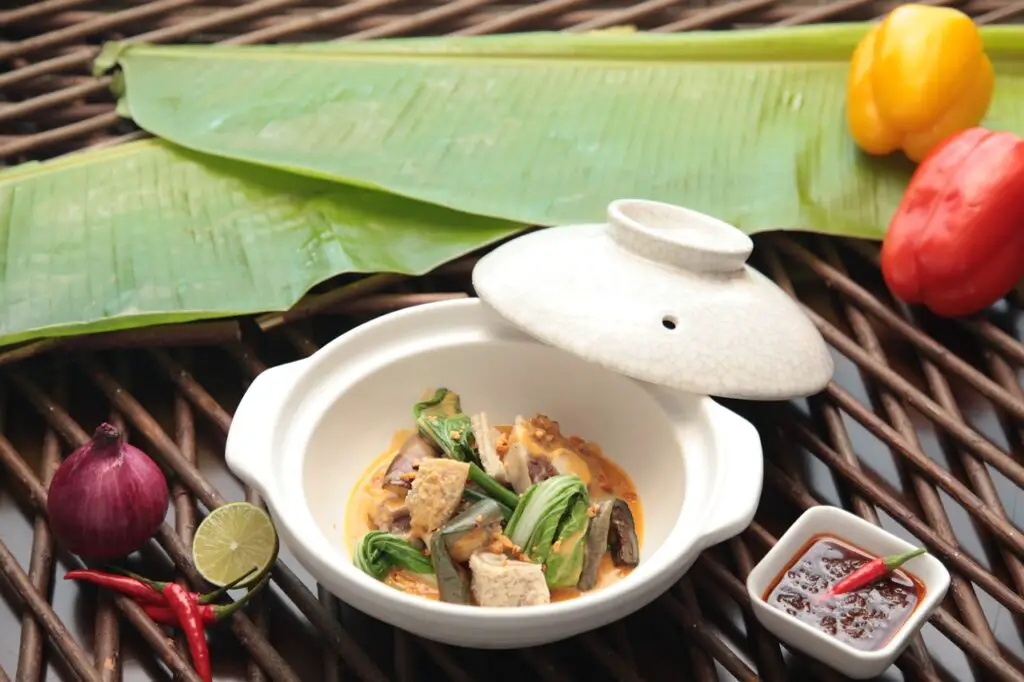
INGREDIENTS OF KARE-KARE
- 2 lbs beef brisket, cut into serving pieces
- 1/2 cup peanut butter
- 2 tbsp annatto powder (achuete)
- 1 large onion, chopped
- 5 cloves garlic, minced
- 1 eggplant, sliced
- 1 bundle of pechay (bok choy), sliced
- 1 banana blossom (puso ng saging), sliced
- 2 tbsp oil
- 6 cups water
- salt and pepper to taste
HOW TO COOK KARE-KARE
- In a large pot, heat the oil over medium-high heat. Add the onion and garlic and sauté until the onion is translucent.
- Add the beef and cook until browned on all sides.
- Add the water and bring it to a boil. Reduce the heat to low, cover the pot, and simmer for about 1.5 hours, or until the beef is tender.
- In a separate pan, heat the annatto powder in oil over low heat until it dissolves. Strain the oil and add it to the beef.
- Add the peanut butter to the pot and stir until it is well combined. Simmer for another 10 minutes.
- Add the eggplant, pechay, and banana blossom to the pot and simmer until the vegetables are cooked through.
- Season with salt and pepper to taste.
- Serve hot with steamed rice and bagoong (shrimp paste) on the side, if desired.
10. PINAKBET
Pinakbet is a traditional Filipino dish from the Ilocos region in the Philippines’ northern region. It is a flavorful and hearty vegetable stew made with a variety of vegetables cooked in a fragrant shrimp paste sauce, typically including eggplant, okra, bitter melon, squash, and string beans. Pinakbet is a popular Filipino dish known for its unique flavor combination and use of locally available vegetables.
The term “pinakbet” is derived from the Ilocano word “pinakebbet” which means “shrunk” or “shriveled,” referring to the cooking method used for the dish.
INGREDIENTS OF PINAKBET
- 1 small eggplant, cut into chunks
- 6-8 pieces okra, halved
- 1 small bitter melon (ampalaya), seeds removed and sliced
- 1/2 small squash, peeled and cut into chunks
- 1/2 cup string beans, cut into 2-inch pieces
- 2 cloves garlic, minced
- 1 small onion, diced
- 2 tablespoons cooking oil (vegetable oil or coconut oil)
- 2 tablespoons shrimp paste (bagoong)
- 1/2 cup water
- Salt and pepper to taste
HOW TO COOK PINAKBET
- Heat the cooking oil in a pot or wok over medium heat.
- Add the minced garlic and diced onion and sauté until fragrant and slightly softened.
- Add the shrimp paste (bagoong) to the pot and stir-fry for a minute to release its flavor.
- Add the meat (if using) and cook until it is slightly browned on all sides.
- Add the eggplant, okra, bitter melon, squash, and string beans to the pot. Stir-fry the vegetables for a few minutes until they start to soften.
- Pour in the water and bring it to a boil.
- Reduce the heat to low and let the Pinakbet simmer for about 10-15 minutes, or until the vegetables are cooked through but still retain some bite.
- Season with salt and pepper to taste. Be mindful of the saltiness of the shrimp paste, so you may need to adjust the amount of salt accordingly.
- Serve hot with steamed rice.
11. CENTURY TUNA
If you’re looking for a quick and easy lunch idea, Century Tuna, a popular canned tuna brand, can be a versatile and tasty option. Here’s a simple recipe for a delicious Century Tuna meal that you can enjoy for lunch:
INGREDIENTS
- 1 can of Century Tuna (any variant or flavor of your choice)
- Steamed white rice
INSTRUCTIONS
- Open the can of Century Tuna using a can opener or a pull-tab lid, following the instructions on the can.
- Empty the contents of the can into a serving dish.
- Heat the steamed white rice.
- Serve the hot steamed white rice alongside the Century Tuna.
VARIATIONS
- If you want to add some flavor to the Century Tuna, add some seasonings or condiments like soy sauce, vinegar, or a squeeze of lemon or calamansi juice.
- You can also add some chopped fresh vegetables, like tomatoes, onions, or cilantro, for a burst of freshness and crunch.
- For a more substantial meal, you can also stir-fry the Century Tuna with some vegetables and spices, and then serve it over steamed white rice for a delicious tuna rice bowl.
12. GINATAANG TILAPIA
Ginataang Tilapia is a delectable Filipino dish made with fresh tilapia cooked in a creamy and flavorful coconut milk sauce. It’s a popular Filipino dish known for its rich and aromatic flavors. Here’s a simple recipe for Ginataang Tilapia that you can make at home:
INGREDIENTS OF GINATAANG TILAPIA
- 2 tilapia fish, cleaned and gutted
- 1 tablespoon cooking oil
- 1 small onion, minced
- 3 cloves garlic, minced
- 1 thumb-sized piece of ginger, minced
- 1 red bell pepper, sliced
- 1 green bell pepper, sliced
- 1 cup coconut milk
- 2 tablespoons fish sauce
- 1 tablespoon sugar
- Salt and pepper to taste
- Chopped fresh cilantro for garnish (optional)
HOW TO COOK GINATAANG TILAPIA
- In a large pan or wok, heat the cooking oil over medium heat.
- Add the minced onion, garlic, and ginger to the pan and sauté until fragrant.
- Add the sliced bell peppers to the pan and cook for a few minutes until they start to soften.
- Pour in the coconut milk and bring it to a simmer.
- Add the fish sauce and sugar to the pan, and season with salt and pepper to taste.
- Gently place the cleaned tilapia fish into the coconut milk sauce, and let it simmer for about 10-15 minutes or until the fish is cooked through and flakes easily with a fork.
- Once the fish is cooked, carefully transfer the Ginataang Tilapia to a serving plate.
- Garnish with chopped fresh cilantro, if desired.
- Serve hot with steamed rice and enjoy the creamy and flavorful Ginataan Tilapia!
13. CHICKEN INASAL
Chicken Inasal is a tangy, delicious, and slightly charred Filipino meal. It’s typically grilled with a marinade of vinegar, calamansi juice or lemon juice, soy sauce, and spices for a smokey flavor. It’s a popular dish for gatherings and BBQs, served with steamed rice and a dipping sauce. Make Chicken Inasal at home to enjoy its amazing flavors and distinct flavor!

INGREDIENTS OF CHICKEN INASAL
- 1 whole chicken, cut into serving pieces
- 1/2 cup cane vinegar or white vinegar
- 1/4 cup calamansi juice or lemon juice
- 1/4 cup Sprite or 7-Up
- 1/4 cup soy sauce
- 1 tablespoon minced garlic
- 1 tablespoon minced ginger
- 1 tablespoon brown sugar
- 1 teaspoon ground black pepper
- 1 teaspoon paprika
- 1/2 teaspoon turmeric powder (optional, for color)
- Salt, to taste
- Cooking oil, for basting and grilling
HOW TO COOK CHICKEN INASAL
- In a bowl, combine vinegar, calamansi juice or lemon juice, Sprite or 7-Up, soy sauce, minced garlic, minced ginger, brown sugar, ground black pepper, paprika, turmeric powder (if using), and salt. Mix well to create the marinade.
- Place the chicken pieces in a large container or Ziploc bag, and pour the marinade over the chicken. Make sure the chicken is fully coated with the marinade. Let it marinate in the refrigerator for at least 4 hours, or preferably overnight for best results.
- Preheat your grill or barbecue to medium-high heat.
- Remove the chicken from the marinade, reserving the marinade for basting. Thread the chicken pieces onto skewers, if desired, for easier grilling.
- Grill the chicken on medium-high heat for about 6-8 minutes per side, basting with the reserved marinade occasionally, until the chicken is cooked through and has a nice charred and caramelized exterior.
- Remove the chicken from the grill and let it rest for a few minutes before serving. Serve hot with steamed rice and your favorite dipping sauce, such as sinamak (spiced vinegar) or garlic-vinegar sauce.
14. DAING NA BONELESS BANGUS
Daing na boneless bangus is a popular Filipino dish made from milkfish, also known as bangus, that has been marinated, usually in a mixture of vinegar, garlic, and spices, and then fried until crispy. The term “daing” refers to the process of marinating the fish to impart flavor and extend its shelf life.
INGREDIENTS OF DAING NA BONELESS BANGUS
- 1 whole boneless bangus (milkfish)
- 1/2 cup white vinegar
- 1/4 cup soy sauce
- 6 cloves garlic, minced
- 1/2 teaspoon ground black pepper
- 1/2 teaspoon salt
- Cooking oil for frying
HOW TO COOK DAING NA BANGUS
- In a bowl, mix together the vinegar, soy sauce, minced garlic, ground black pepper, and salt to make the marinade.
- Place the boneless bangus in a shallow dish and pour the marinade over it, making sure to coat both sides of the fish. Let it marinate in the refrigerator for at least 30 minutes or up to overnight for best results.
- Heat enough cooking oil in a deep frying pan or wok over medium heat.
- Remove the boneless bangus from the marinade, allowing any excess liquid to drain off, and then carefully lower it into the hot oil, skin side down.
- Fry the fish for about 3-4 minutes on each side or until golden brown and crispy. Use a splatter guard if needed to prevent oil splatters.
- Once cooked, remove the daing na boneless bangus from the oil and place it on a paper towel-lined plate to drain excess oil.
- Serve hot with steamed rice and vinegar dipping sauce on the side.
15. BICOL EXPRESS
Bicol Express is a popular Filipino dish that has gained fame for its spicy and flavorful taste. It is made with pork cooked in coconut milk, shrimp paste, and red chili peppers, giving it a rich and fiery flavor profile. This dish originated from the Bicol region in the Philippines, known for its love for spicy food and bold flavors.
INGREDIENTS OF BICOL EXPRESS
- 500g pork belly or pork shoulder, thinly sliced
- 2 tablespoons cooking oil
- 1 onion, minced
- 4 cloves garlic, minced
- 2 tablespoons shrimp paste (bagoong)
- 2 cups coconut milk
- 1 cup coconut cream
- 4-5 red chili peppers, sliced (adjust to your desired level of spiciness)
- 1 tablespoon fish sauce (patis)
- 1 teaspoon sugar
- Salt and pepper to taste
HOW TO COOK BICOL EXPRESS
- Heat the cooking oil in a pan over medium heat. Sauté the minced onion and garlic until fragrant.
- Add the sliced pork and cook until lightly browned on all sides.
- Stir in the shrimp paste (bagoong) and cook for a minute.
- Pour in the coconut milk and bring it to a boil. Reduce the heat to low and let it simmer for about 10 minutes or until the pork is tender and the flavors have melded.
- Add the coconut cream and sliced red chili peppers. Simmer for another 5 minutes.
- Season with fish sauce (patis), sugar, salt, and pepper to taste. Adjust the seasoning according to your preference.
- Serve hot with steamed rice and enjoy!
16. LAING
Laing is a traditional Filipino meal made of taro leaves, coconut milk, shrimp paste, and spices. Here’s a simple and tasty laing recipe you can make at home:
INGREDIENTS OF LAING
- 2 cups taro leaves, washed and drained
- 1/2 cup dried taro stalks (optional)
- 1/2 pound pork belly or pork shoulder, thinly sliced
- 1/4 cup shrimp paste (bagoong)
- 1 small onion, minced
- 4 cloves garlic, minced
- 2 cups coconut milk
- 2 cups water
- 2-3 dried red chili peppers (optional)
- Salt and pepper to taste
- Cooking oil for sautéing
HOW TO COOK LAING
- In a large pot or wok, heat some cooking oil over medium heat.
- Sauté the minced onion and garlic until fragrant.
- Add the pork slices and cook until they turn light brown.
- Stir in the shrimp paste (bagoong) and cook for 2-3 minutes.
- Add the coconut milk and water, and bring to a boil.
- Add the taro leaves and dried taro stalks (if using), and lower the heat to a simmer.
- Let the mixture cook for about 20-30 minutes or until the taro leaves are tender and the flavors have melded together, stirring occasionally.
- Season with salt and pepper to taste, and add dried red chili peppers for extra spice if desired.
- Serve hot with steamed rice.
17. FRIED HOTDOGS AND INSTANT NOODLES
INGREDIENTS
For Fried Tender Juicy Hotdogs:
- 4-6 tender juicy hotdogs
- Oil for frying
For Instant Noodles:
- 1 package of your favorite instant noodles
- Water for boiling noodles
- Noodle seasoning packet (included in the instant noodles)
Instructions
For Fried Tender Juicy Hotdogs:
- Heat oil in a deep frying pan or wok.
- Add the hotdogs to the hot oil and fry until golden brown and crispy, turning occasionally to ensure even cooking.
For Instant Noodles:
- Bring a pot of water to a boil and cook the instant noodles according to package instructions.
- Drain the cooked noodles and mix them in the noodle seasoning packet that came with the instant noodles. Set aside.
Serve with rice.
18. TINOLANG MANOK
Tinolang Manok is a popular Filipino chicken soup spiced with ginger, garlic, onion, and leafy vegetables such as chili leaves or malunggay (moringa). Here’s how to make Tinolang Manok:
INGREDIENTS OF TINOLANG MANOK
- 1 whole chicken, cut into serving pieces
- 1 thumb-sized piece of ginger, sliced
- 3 cloves garlic, minced
- 1 onion, sliced
- 1 tablespoon cooking oil
- 1 tablespoon fish sauce
- 4 cups water
- 2 cups of leafy vegetables (e.g., chili leaves, malunggay leaves, spinach)
- Salt and pepper to taste
HOW TO COOK TINOLANG MANOK
- Heat the cooking oil in a pot over medium heat. Add ginger, garlic, and onion and sauté until fragrant.
- Add the chicken and fish sauce, and sauté for 5 minutes until the chicken is slightly browned.
- Pour in the water and bring to a boil. Lower the heat and simmer for 30-40 minutes, or until the chicken is fully cooked.
- Add the leafy vegetables and simmer for another 5-7 minutes.
- Season with salt and pepper to taste.
- Serve hot with steamed rice.
19. TAPSILOG
Tapsilog is a classic Filipino breakfast meal made up of three primary ingredients: tapa (marinated beef), sinangag (garlic fried rice), and itlog (fried egg). The name “tapsilog” is a mixture of three words: “tap” from tapa, “si” from sinangag, and “log” from itlog.
INGREDIENTS OF TAPSILOG
- 1 pound beef sirloin, thinly sliced
- 1/4 cup soy sauce
- 1/4 cup calamansi juice or lemon juice
- 1/4 cup brown sugar
- 1 tsp black pepper
- 4 cloves garlic, minced
- 4 cups cooked rice
- 4 cloves garlic, minced
- 4 eggs
- Oil for frying
INGREDIENTS OF TAPSILOG
- In a bowl, mix together soy sauce, calamansi juice, brown sugar, black pepper, and minced garlic.
- Add the thinly sliced beef into the bowl and mix until all the meat is coated with the marinade. Marinate for at least 30 minutes or overnight in the refrigerator.
- In a large skillet, heat some oil over medium-high heat. Cook the marinated beef in batches until browned and crispy. Set aside.
- In the same skillet, add more oil and sauté the minced garlic until fragrant. Add the cooked rice and stir-fry for a few minutes until heated through and slightly toasted.
- In a separate pan, fry the eggs according to your preference (sunny-side up, over-easy, etc.).
- To serve, place a serving of sinangag (garlic fried rice) on a plate, top with the crispy tapa (marinated beef), and add a fried egg on the side. Serve hot with a side of atchara (pickled papaya) or sliced tomatoes, if desired.
20. TOKWA’T BABOY
Tokwa’t Baboy is a Filipino dish made of fried tofu (tokwa) and boiled pork (baboy) with a tangy, sweet, and spicy sauce made of soy sauce, vinegar, sugar, onions, garlic, and chili peppers. Typically, the meal is served as an appetizer or as a side dish to accompany other Filipino dishes. It’s a popular street snack in the Philippines, and you can find it in a variety of local cafes and restaurants.
INGREDIENTS OF TOKWA’T BABOY
- 1 block of firm tofu, sliced into cubes
- 1/2 lb of pork belly, boiled and sliced into bite-sized pieces
- 1/4 cup of soy sauce
- 1/4 cup of vinegar
- 1/4 cup of water
- 1 small onion, chopped
- 2 cloves of garlic, minced
- 1 red chili pepper, sliced (optional)
- 1 tsp of sugar
- Salt and pepper to taste
- Cooking oil
HOW TO COOK TOKWA’T BABOY
- In a small bowl, mix together soy sauce, vinegar, water, onion, garlic, chili pepper, sugar, salt, and pepper. Set aside.
- In a pan, heat enough oil to fry the tofu cubes until they turn golden brown. Drain on paper towels and set aside.
- In another pan, sauté the boiled pork belly until they turn golden brown. Drain on paper towels and set aside.
- In a serving dish, arrange the fried tofu and boiled pork belly.
- Pour the sauce over the tofu and pork belly. Garnish with chopped onions and chili peppers, if desired.
- Serve as an appetizer or as a side dish.
21. PRITONG GALUNGONG
Pritong Galunggong is a traditional Filipino dish made with fried galunggong (round scad), a small saltwater fish native to the Philippines. It’s a simple but tasty recipe that may be served for breakfast, lunch, or dinner. It is frequently served with steaming rice, sliced tomatoes, and a dipping sauce of vinegar, soy sauce, minced onions, and chili peppers. Pritong Galunggong is a cheap and delectable dinner that is popular among Filipinos.
INGREDIENTS OF PRITONG GALUNGGONG
- 4 pieces of galunggong (cleaned and gutted)
- 1/2 cup of all-purpose flour
- 1/4 cup of cornstarch
- 1 teaspoon of salt
- 1/2 teaspoon of ground black pepper
- 1/2 teaspoon of garlic powder
- Cooking oil for frying
- Calamansi wedges for serving
HOW TO COOK PRITONG GALUNGGONG
- In a bowl, combine flour, cornstarch, salt, pepper, and garlic powder.
- Mix well until everything is evenly distributed.
- Coat the cleaned and gutted galunggong in the flour mixture, making sure to cover both sides.
- Heat a pan with enough cooking oil for frying. Once the oil is hot, add the galunggong.
- Fry the galunggong for 3-4 minutes on each side or until they turn golden brown.
- Once cooked, transfer the fried galunggong to a plate lined with paper towels to absorb excess oil.
- Serve the pritong galunggong with calamansi wedges on the side.
22. ANGEL’S PIZZA
Treat yourself and skip the hassle today! Buy Angle’s Pizza.

23. PANCIT CANTON GISADO
Pancit Canton Guisado is a Filipino stir-fried noodle dish that is commonly served in many households and food establishments in the Philippines.
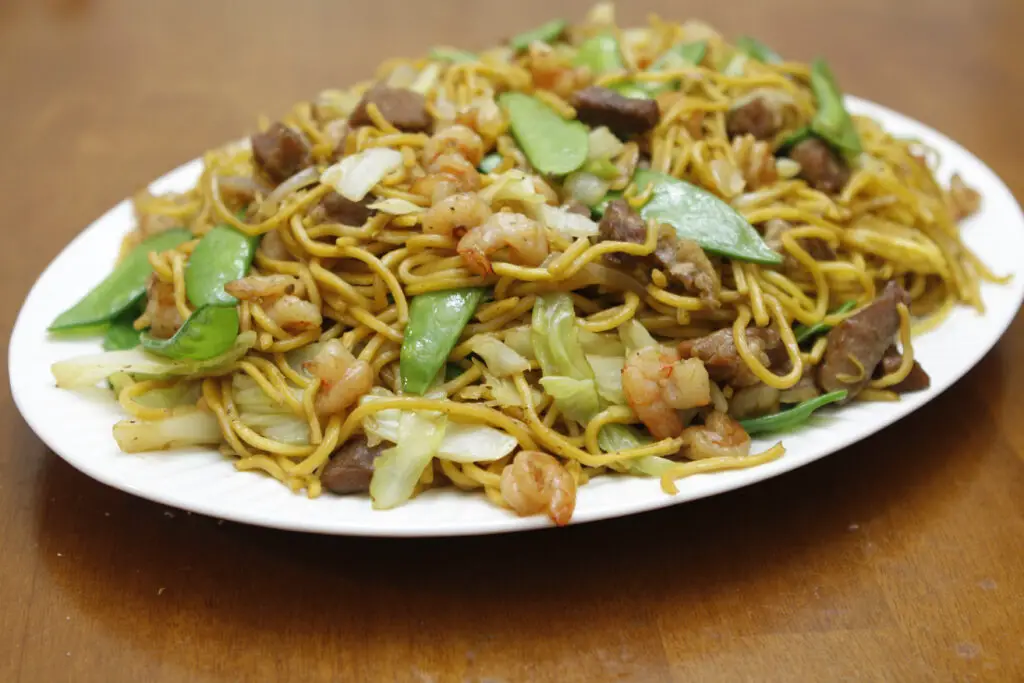
Here is a simple recipe that you can follow:
INGREDIENTS OF PANCIT CANTON GISADO
- 500g pancit canton noodles
- 2 tbsp cooking oil
- 2 cloves garlic, minced
- 1 onion, chopped
- 1 chicken breast, sliced into small pieces
- 1 small carrot, sliced
- 1 small cabbage, chopped
- 1/2 cup green beans, sliced
- 1/2 cup chicken broth
- 1 tbsp oyster sauce
- 2 tbsp soy sauce
- Salt and pepper to taste
HOW TO COOK PANCIT CANTON GISADO
- In a large pan or wok, heat the cooking oil over medium-high heat.
- Saute the garlic and onion until fragrant.
- Add the sliced chicken and cook until it is no longer pink.
- Add the sliced carrots, chopped cabbage, and green beans. Stir-fry for a few minutes until the vegetables are tender.
- Pour in the chicken broth and bring it to a simmer.
- Add the pancit canton noodles, oyster sauce, and soy sauce. Mix everything until the noodles are coated with the sauce.
- Continue stir-frying for another 5-7 minutes or until the noodles are cooked through.
- Season with salt and pepper to taste.
- Serve hot and enjoy!
Depending on your preferences, you can also include sliced pork, shrimp, squid, or tofu. Some folks like to add sliced hard-boiled eggs or chopped onions to their Pancit Canton Guisado.
24. CHOP SUEY
Filipino-style chop suey is often enjoyed as a main course and is a popular dish during celebrations or family gatherings. It is a hearty and flavorful vegetable stir-fry typically made with a mix of fresh vegetables, meat or shrimp, and a thickened savory sauce.
Here’s a recipe for Filipino chop suey:
INGREDIENTS OF CHOP SUEY
- 1 cup sliced chicken or pork (or shrimp)
- 2 tablespoons vegetable oil
- 1 onion, sliced
- 3 cloves garlic, minced
- 1 cup sliced carrots
- 1 cup sliced bell peppers (any color)
- 1 cup sliced cabbage
- 1 cup cauliflower florets
- 1 cup broccoli florets
- 1 cup snow peas
- 1 cup sliced mushrooms
- 1 cup chicken or vegetable broth
- 2 tablespoons oyster sauce
- 1 tablespoon soy sauce
- 1 teaspoon sugar
- Salt and pepper to taste
- Cornstarch slurry (1 tablespoon cornstarch mixed with 2 tablespoons water)
- Optional: 1 cup quail eggs or tofu cubes (for added protein)
HOW TO COOK CHO SUEY
- In a large wok or skillet, heat the vegetable oil over medium-high heat.
- Add the chicken or pork (or shrimp) and cook until browned and cooked through. Remove from the wok and set aside.
- In the same wok, add the onion and garlic, and sauté until fragrant and translucent.
- Add the carrots, bell peppers, cabbage, cauliflower, broccoli, snow peas, and mushrooms to the wok. Stir-fry for 2-3 minutes until the vegetables are slightly tender.
- In a small bowl, mix the chicken or vegetable broth, oyster sauce, soy sauce, sugar, salt, and pepper. Pour the sauce mixture into the wok and stir well to coat the vegetables.
- Bring the mixture to a simmer and let it cook for a few minutes until the vegetables are cooked but still crisp.
- If using quail eggs or tofu, add them to the wok and stir gently to incorporate them with the vegetables.
- Stir in the cornstarch slurry to thicken the sauce, and cook for an additional minute until the sauce has thickened.
- Add the cooked chicken or pork (or shrimp) back to the wok and toss everything together to combine.
- Remove from heat and serve hot with steamed rice.
25. Sizzling Teriyaki Squid
Sizzling Teriyaki Squid is a delicious and flavorful seafood dish that combines tender squid with a sweet and savory teriyaki sauce. It is typically served on a sizzling hot plate, creating an enticing sizzle and adding to the presentation. Here’s a recipe for Sizzling Teriyaki Squid:
HOW TO COOK SIZZLING TERIYAKI SQUID
- 500 grams of squid, cleaned and cut into rings or pieces
- 3 tablespoons teriyaki sauce
- 2 tablespoons soy sauce
- 2 tablespoons mirin (sweet rice wine)
- 2 tablespoons honey or brown sugar
- 2 tablespoons vegetable oil
- 1 onion, sliced
- 1 bell pepper, sliced
- 2 cloves garlic, minced
- Optional: chopped spring onions or sesame seeds for garnish
HOW TO COOK SIZZLING TERIYAKI SQUID
- In a bowl, combine the teriyaki sauce, soy sauce, mirin, and honey (or brown sugar). Stir well to create the teriyaki sauce marinade.
- Place the squid rings or pieces in a shallow dish and pour the teriyaki sauce marinade over them. Toss to coat the squid evenly. Let it marinate for at least 30 minutes in the refrigerator.
- In a large skillet or wok, heat the vegetable oil over medium-high heat.
- Add the sliced onion and bell pepper to the skillet and sauté for a few minutes until they start to soften.
- Add the minced garlic and sauté for another minute until fragrant.
- Remove the squid from the marinade, reserving the marinade for later use.
- Add the squid to the skillet and stir-fry for about 2-3 minutes until the squid turns opaque and is cooked through. Be careful not to overcook, as squid can become tough.
- Remove the squid, onion, and bell pepper from the skillet and set aside.
- In the same skillet, pour in the reserved marinade and bring it to a simmer. Let it cook for a few minutes until slightly thickened.
- Return the cooked squid, onion, and bell pepper to the skillet and toss to coat them with the thickened teriyaki sauce.
- Meanwhile, heat a sizzling hot plate over high heat until it is very hot.
- Carefully transfer the cooked squid, onion, and bell pepper to the hot plate, and you should hear a sizzling sound.
- Garnish with chopped spring onions or sesame seeds if desired.
- Serve immediately while sizzling hot, with steamed rice, or as a part of a meal.
26. Pansit ng Tuguegarao
“Pansit ng Tuguegarao” or “Pansit Batil Patung” is a popular noodle dish from Tuguegarao City, Cagayan, Philippines. It’s a staple in the region and is known for its rich and hearty flavors.
INGREDIENTS OF PANSIT TUGUEGARAO
For the Noodles:
- 500 grams of fresh miki noodles
- 200 grams of minced pork or beef
- 1 large onion, chopped
- 4 cloves garlic, minced
- 2 tablespoons soy sauce
- 1 tablespoon oyster sauce
- 1 carrot, julienned
- 1 cup bean sprouts
- 2 eggs, beaten
- 2 eggs, poached
- Salt and pepper to taste
- Cooking oil
For the Batil (Soup):
- 4 cups beef or chicken broth
- 2 eggs, beaten
- Salt and pepper to taste
For the Toppings:
- Chopped spring onions
- Fried garlic
- Chopped chili
HOW TO COOK PANSIT TUGUEGARAO
- Heat oil in a pan over medium heat. Sauté the garlic and onions until fragrant.
- Add the minced meat and cook until browned. Season with soy sauce and oyster sauce.
- Add the fresh miki noodles and stir-fry for a few minutes until well combined with the meat.
- Push the noodles to one side of the pan. Pour the beaten eggs on the other side. Let it cook for a minute then mix with the noodles.
- Add the carrots and bean sprouts. Stir-fry for another minute. Season with salt and pepper.
- For the batil (soup), bring the broth to a boil. Season with salt and pepper. Slowly pour in the beaten eggs while stirring the broth to create egg ribbons.
- Serve the noodles with the soup on the side. Top the noodles with a poached egg, spring onions, fried garlic, and chopped chili.
- Enjoy your Pansit Batil Patung!
27. GINATAANG TILAPIA WITH PECHAY
Ginataang Tilapia with Pechay is a delicious Filipino dish that features tender Tilapia fish cooked in a creamy and flavorful coconut milk sauce, paired with nutritious Pechay (Bok Choy) leaves. This dish combines the richness of coconut milk with the natural sweetness of the fish and the subtle bitterness of Pechay, creating a harmonious blend of flavors.
The Tilapia fish is first sautéed with aromatic onions, garlic, and ginger to enhance the overall taste. Then, the coconut milk is added, infusing the dish with its creamy and slightly sweet essence. The addition of fish sauce provides a savory depth to the sauce, while salt and pepper seasonings balance the flavors.
As the Tilapia fish simmers in the coconut milk sauce, it absorbs the creamy goodness, becoming tender and flaky. The Pechay leaves are added towards the end, allowing them to wilt and impart their fresh, green flavors to the dish.
INGREDIENTS TILAPIA WITH PECHAY
- 2 medium-sized Tilapia fish, cleaned and scaled
- 2 cups Pechay (Bok Choy), leaves separated
- 1 cup Coconut milk
- 1 medium-sized Onion, sliced
- 3 cloves Garlic, minced
- 1 thumb-sized Ginger, sliced
- 2 tablespoons Fish sauce (Patis)
- 1 tablespoon Cooking oil
- Salt and pepper to taste
HOW TO COOK TILAPIA WITH PECHAY
- Heat the cooking oil in a large pan or wok over medium heat.
- Sauté the garlic, onion, and ginger until fragrant and onions become translucent.
- Add the coconut milk and bring it to a gentle simmer.
- Add the fish sauce and season with salt and pepper to taste.
- Carefully place the Tilapia fish into the pan and let it cook for about 5 minutes on each side or until the fish is fully cooked and flakes easily with a fork.
- Add the Pechay leaves to the pan and cook for an additional 2-3 minutes or until the leaves have wilted.
- Adjust the seasoning if needed.
- Remove from heat and transfer to a serving dish.
- Serve the Ginataang Tilapia with Pechay hot with steamed rice.
28. CHICKEN PASTIL
Chicken Pastil is a popular dish from the Philippines that showcases tender shredded chicken, cooked rice, and flavorful spices all wrapped in a banana leaf. This dish offers a delightful combination of savory chicken, aromatic rice, and the subtle earthy aroma of the banana leaf.
INGREDIENTS FOR CHICKEN PASTIL
- 2 cups Cooked rice
- 2 cups Shredded cooked chicken (you can use boiled or roasted chicken)
- 4-6 pieces Banana leaves (blanched or softened)
- 1 medium-sized Onion, thinly sliced
- 2 cloves Garlic, minced
- 1 teaspoon Ginger, minced
- 1/2 teaspoon Ground turmeric
- 1/2 teaspoon Ground cumin
- Salt and pepper to taste
- Cooking oil
HOW TO COOK CHICKEN PASTIL
- In a pan, heat some cooking oil over medium heat.
- Sauté the minced garlic, ginger, and sliced onions until the onions are translucent and aromatic.
- Add the shredded cooked chicken to the pan. Season with ground turmeric, ground cumin, salt, and pepper. Stir well to evenly distribute the spices.
- Allow the chicken to cook for a few minutes, letting the flavors meld together. Adjust the seasoning if needed.
- Take a piece of banana leaf and place a portion of cooked rice in the center, shaping it into a mound.
- Top the rice with a generous amount of the seasoned shredded chicken.
- Carefully fold the sides of the banana leaf over the chicken and rice to create a neat package, similar to a rectangular parcel. Secure the sides with toothpicks or twine.
- Repeat the process for the remaining banana leaves, rice, and chicken.
- Steam the wrapped banana leaf parcels for about 10-15 minutes. This allows the flavors to further infuse and the banana leaves to impart their aroma.
- Once cooked, carefully unwrap the banana leaf parcels and transfer the Chicken Pastil to serving plates.
- Serve hot as a delicious and convenient meal on its own, or pair it with a side of pickled vegetables for added flavor.
Chicken Pastil not only delights the taste buds with its flavorful combination but also showcases the unique culinary tradition of using banana leaves for cooking and serving in the Philippines.
29.GINATAANG YELLOWFIN TUNA
Ginataang Yellowfin Tuna is a Filipino seafood dish that features the rich and creamy flavors of coconut milk, combined with tender yellowfin tuna steaks and a medley of vegetables. This dish is a delightful fusion of savory and creamy, making it a comforting and satisfying meal.
INGREDIENTS FOR GINATAANG YELLOWFIN TUNA
- 2 yellowfin tuna steaks, about 1 pound each
- 2 cups coconut milk
- 1 medium-sized onion, finely chopped
- 2 cloves garlic, minced
- 1 thumb-sized piece of ginger, sliced into thin strips
- 1 red bell pepper, thinly sliced
- 1 green bell pepper, thinly sliced
- 1 medium-sized eggplant, sliced into rounds
- 1 cup spinach or kangkong leaves (water spinach)
- 2-3 tablespoons fish sauce (patis)
- 1 tablespoon vegetable oil
- Salt and pepper to taste
HOW TO COOK GINATAANG YELLOWFIN TUNA
- In a large, deep pan or wok, heat the vegetable oil over medium heat.
- Add the minced garlic and sliced ginger to the pan. Sauté them until fragrant and slightly golden.
- Add the finely chopped onion and cook until it becomes translucent.
- Pour in the coconut milk and bring it to a gentle simmer. Let it cook for about 5-7 minutes, stirring occasionally, until the coconut milk thickens slightly and releases its aroma.
- Season the coconut milk with fish sauce (patis), salt, and pepper. Adjust the seasoning to your taste.
- Carefully slide the yellowfin tuna steaks into the simmering coconut milk. Allow them to cook for about 5-7 minutes on each side, or until the tuna is cooked through and flakes easily. Be gentle when flipping the tuna to avoid breaking it apart.
- While the tuna is cooking, add the sliced bell peppers and eggplant to the coconut milk. Let them simmer until they are tender.
- Once the tuna, bell peppers, and eggplant are cooked, add the spinach or kangkong leaves to the pan. Let them wilt into the coconut milk, which should take only a minute or so.
- Taste the sauce and adjust the seasoning if needed. You can add more fish sauce, salt, or pepper to suit your preferences.
- Remove the pan from the heat and transfer the Ginataang Yellowfin Tuna to a serving platter.
Ginataang Yellowfin Tuna is best served hot with steamed rice. This dish combines the creaminess of coconut milk with the freshness of vegetables and the savory goodness of yellowfin tuna, creating a comforting and flavorful Filipino seafood experience. Enjoy!
30. BEEF AMPALAYA
Beef Ampalaya is a classic Filipino dish known for its unique blend of flavors and textures. It combines the tender goodness of beef with the slight bitterness of ampalaya, also known as bitter melon or bitter gourd, resulting in a delicious and nutritious meal.
INGREDIENTS OF BEEF AMPALAYA
- 1/2 pound thinly sliced beef (sirloin or tenderloin works well)
- 1 medium-sized ampalaya (bitter melon), sliced and seeds removed
- 1 medium-sized onion, thinly sliced
- 2 cloves garlic, minced
- 2 medium-sized tomatoes, diced
- 2 tablespoons soy sauce
- 1 tablespoon fish sauce (patis)
- 1/2 cup beef broth
- 2 tablespoons vegetable oil
- Salt and pepper to taste
HOW TO COOK BEEF AMPALAYA
- Start by preparing the ampalaya. Slice it in half lengthwise and scoop out the seeds and white pith. Slice the ampalaya into thin half-moon shapes. To reduce bitterness, you can sprinkle salt over the sliced ampalaya and let it sit for about 10 minutes, then rinse and drain.
- In a large pan, heat the vegetable oil over medium heat. Add the minced garlic and sauté until fragrant.
- Add the sliced onions and cook until they become translucent.
- Incorporate the diced tomatoes and cook until they soften and release their juices.
- Add the thinly sliced beef to the pan and cook until it browns. You can season the beef with a pinch of salt and pepper.
- Pour in the soy sauce and fish sauce. Stir well to coat the beef evenly.
- Pour the beef broth into the pan and bring the mixture to a simmer. Let it cook for about 10-15 minutes or until the beef becomes tender. Add more broth if needed.
- Once the beef is tender, add the sliced ampalaya to the pan. Stir to combine all the ingredients.
- Cover the pan and let it simmer for an additional 5-7 minutes, or until the ampalaya is cooked but still slightly crisp.
- Taste the dish and adjust the seasoning with salt and pepper as necessary.
- Remove the Beef Ampalaya from heat and transfer it to a serving dish.
Beef Ampalaya is traditionally served with steamed rice. The bitterness of the ampalaya complements the savory beef and creates a well-balanced and flavorful dish. Enjoy this Filipino favorite with your family and friends!
31. TINOLANG ISDA
Tinolang Isda is a classic Filipino fish soup known for its comforting flavors and hearty ingredients. This dish features tender fish cooked in a flavorful broth with ginger, vegetables, and leafy greens, resulting in a nourishing and satisfying meal.
Ingredients of Tinolang Isda
- 1 medium-sized fish (such as tilapia or grouper), cleaned and sliced into serving pieces
- 1 thumb-sized ginger, sliced thinly
- 2 cloves garlic, minced
- 1 medium-sized onion, chopped
- 2 medium-sized tomatoes, sliced
- 2 cups water or fish broth
- 1 cup malunggay leaves or spinach
- 1 cup green papaya, peeled and sliced into wedges
- 2 tablespoons fish sauce (patis)
- Salt and pepper to taste
- 2 tablespoons cooking oil
How to Cook Tinolang Isda
- In a medium-sized pot, heat the cooking oil over medium heat. Add the minced garlic and sliced ginger, and sauté until fragrant.
- Add the chopped onions and cook until they become translucent.
- Incorporate the sliced tomatoes and cook until they start to soften.
- Pour in the water or fish broth and bring it to a simmer.
- Add the fish slices to the pot and let them cook for about 5-7 minutes or until they are almost done.
- Once the fish is almost cooked, add the green papaya slices to the pot. Let them simmer until they are tender but still slightly crisp.
- Season the soup with fish sauce (patis), salt, and pepper according to your taste preferences.
- Finally, add the malunggay leaves or spinach to the pot and let them cook for another minute until wilted.
- Taste the soup and adjust the seasoning if necessary.
- Remove the Tinolang Isda from heat and transfer it to a serving bowl.
Tinolang Isda is best enjoyed hot and is typically served with steamed rice. Its comforting warmth and fresh flavors make it a beloved dish in Filipino cuisine. Enjoy this nutritious soup with your loved ones!
32. SARCIADONG PAMPANO
Sarciadong Pampano is a beloved dish in Filipino cuisine, celebrated for its delightful combination of tender fish, tangy tomato sauce, and aromatic spices. Pampano, a popular fish in the Philippines known for its firm and succulent flesh, takes center stage in this recipe, making it a favorite among seafood enthusiasts.
Ingredients of Sarciadong Pampano
- 1 large Pampano fish, cleaned and sliced
- 2 large tomatoes, sliced
- 1 large onion, sliced
- 3 cloves garlic, minced
- 2 eggs, beaten
- 1 cup tomato sauce
- 1 cup water
- 2 tablespoons cooking oil
- Salt and pepper to taste
- Spring onions for garnish (optional)
How to Cook Sarciadong Pampano
- Prepare the Fish: Season the Pampano slices with salt and pepper.
- Fry the Fish: In a large pan, heat the cooking oil over medium heat. Fry the Pampano slices until golden brown on both sides. Remove from the pan and set aside.
- Sauté Aromatics: In the same pan, sauté the minced garlic until fragrant. Add the sliced onions and cook until translucent. Incorporate the sliced tomatoes and cook until they start to soften.
- Add Tomato Sauce: Pour in the tomato sauce and water. Let the mixture simmer for 5 minutes, allowing the flavors to meld.
- Add Eggs: Slowly pour the beaten eggs into the pan while stirring gently to create egg ribbons in the sauce.
- Season to Taste: Season the sauce with salt and pepper according to your preference.
- Add Fish: Gently place the fried Pampano slices back into the pan, covering them with the sauce. Simmer for an additional 3-5 minutes.
- Serve: Transfer the Sarciadong Pampano to a serving dish. Garnish with chopped spring onions if desired.
- Enjoy: Serve hot with steamed rice.
33. Chicken Tocino
Chicken Tocino is a delightful Filipino dish featuring tender chicken marinated in a sweet and savory blend of sugar, soy sauce, vinegar, garlic, and spices. Here’s a simple recipe to make Chicken Tocino at home:
Ingredients of Chicken Tocino
- 500g chicken thighs, sliced thinly
- 1/4 cup brown sugar
- 3 tablespoons soy sauce
- 2 tablespoons vinegar
- 3 cloves garlic, minced
- 1/2 teaspoon salt
- 1/4 teaspoon ground black pepper
- Cooking oil, for frying
How to Cook Chicken Tocino
- In a bowl, combine brown sugar, soy sauce, vinegar, minced garlic, salt, and pepper. Mix well until the sugar is dissolved.
- Add the thinly sliced chicken thighs to the marinade, ensuring they are well coated. Cover the bowl and refrigerate for at least 4 hours, or overnight for best results.
- Heat cooking oil in a skillet over medium heat. Once hot, add the marinated chicken slices, allowing them to cook until caramelized and golden brown on both sides, about 5-7 minutes per side.
- Once cooked through and caramelized, remove the Chicken Tocino from the skillet and transfer to a serving plate.
- Serve hot with garlic fried rice and sliced tomatoes or atchara (pickled green papaya) on the side.
- Enjoy the sweet and savory flavors of homemade Chicken Tocino!
This Chicken Tocino recipe is perfect for a delicious breakfast or as a main dish for lunch or dinner. It’s easy to make and sure to be a hit with family and friends!
RELATED POSTS
-

Pancit Bato Guisado is a delicious Filipino noodle dish that will satisfy your cravings for a quick and tasty meal. Originating from the town of Bato in Camarines Sur, this…
-
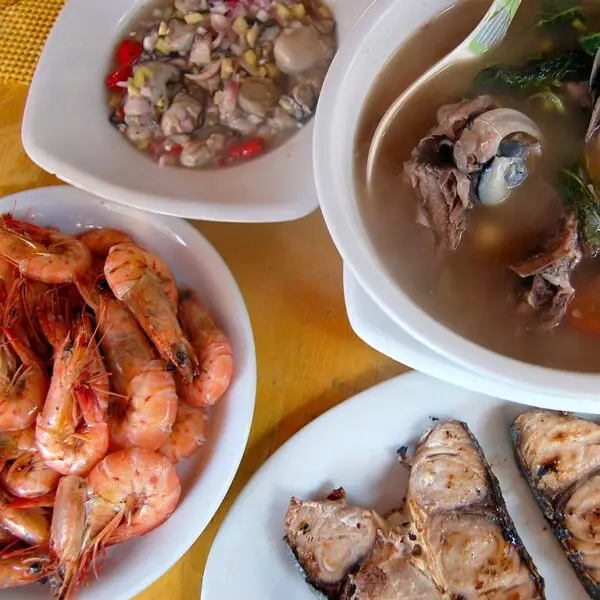
When it comes to Filipino cuisine, ulam combos are an essential part of the dining experience. These delicious pairings bring together different flavors, textures, and ingredients to create a satisfying…
-
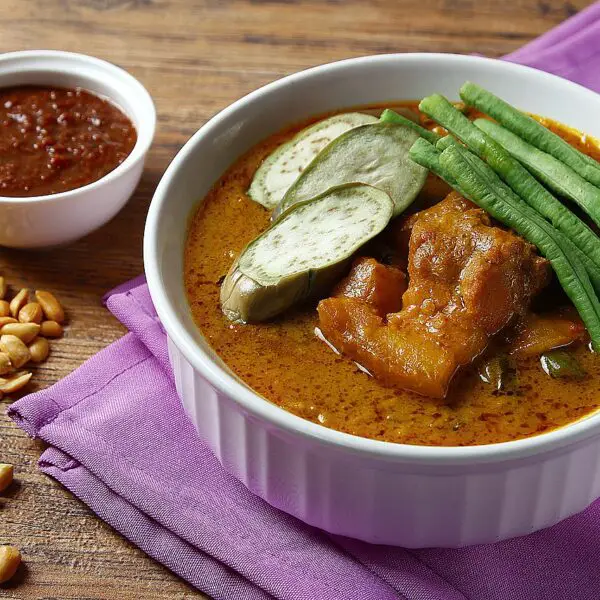
Welcome to our authentic Kare-Kare recipe, where we take you on a flavorful journey through the rich culinary heritage of the Philippines. Kare-Kare is a beloved Filipino dish known for…
-
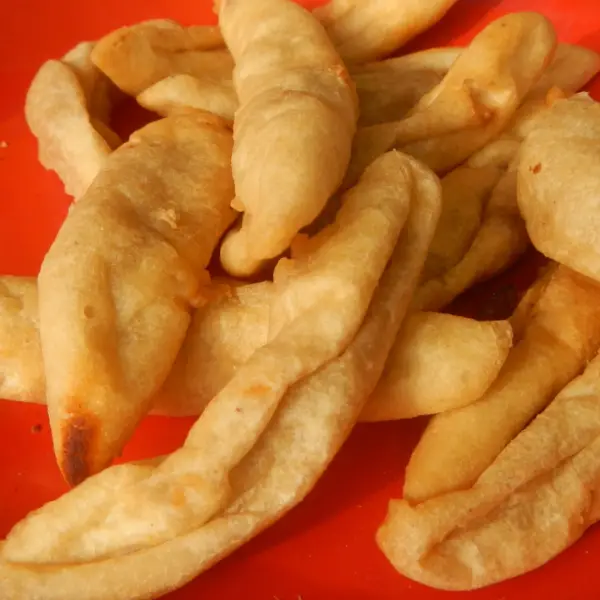
Welcome to our authentic kikiam recipe guide! If you’re a fan of Filipino snacks, you’re in for a treat. Kikiam is a popular street food in the Philippines, loved…
-

Welcome to our guide on how to make an authentic Yang Chow Fried Rice! This classic Chinese dish is loved for its flavorful combination of ingredients and delightful textures. Whether…
-
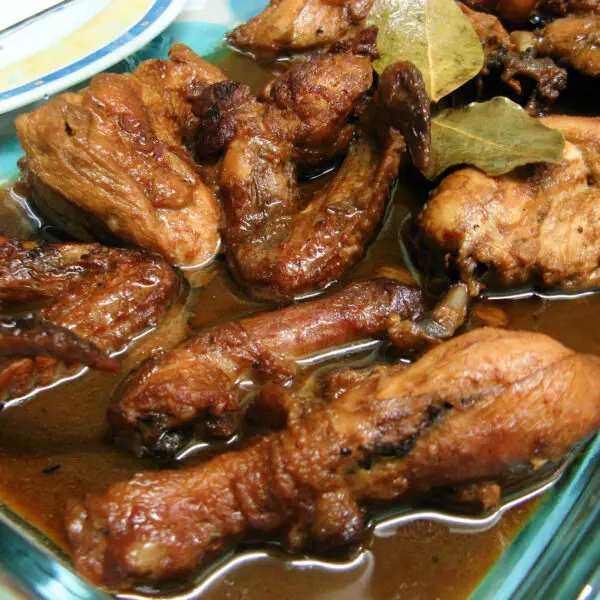
Welcome to our ultimate guide to authentic Filipino Adobo! Whether you’re a fan of Filipino cuisine or looking to explore new flavors, this article will provide you with a traditional…
-
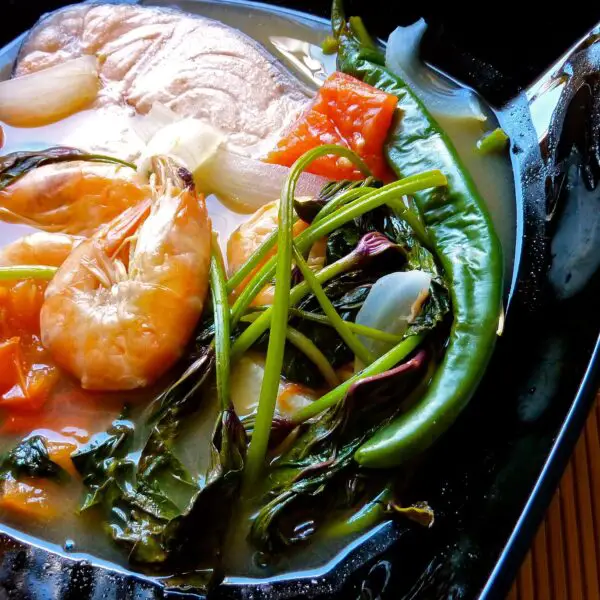
Welcome to our comprehensive guide on Sinigang, the beloved and classic Filipino soup that is known for its tangy and savory flavors. In this article, we will delve into the…
-

Enjoy the delicious fusion tastes on Jollibee’s 2023 breakfast menu for a filling and tasty start to the day.
-

Lapu Lapu Fish, also known as grouper, is a popular Filipino fish often prepared for special occasions and holidays. It is a versatile fish that can be cooked using various…
-
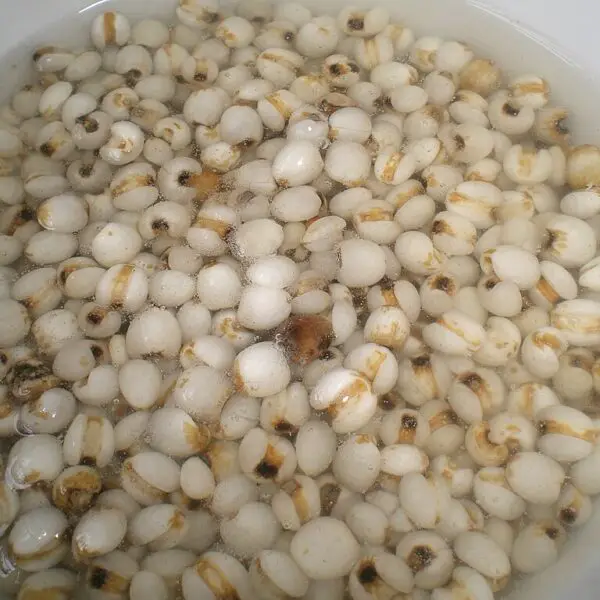
Adlai rice, also known as “Job’s Tears,” is a low-carbohydrate and calorie-rich grain that serves as a nutritious and versatile alternative to rice. It is becoming increasingly popular as a…
-

Napoleones is a beloved delicacy hailing from Bacolod, Philippines. With its layers of buttery puff pastry, creamy custard filling, and sugary glaze, it has become a sought-after treat for locals…
-

SM Mall of Asia, located in Manila, Philippines, is not only a renowned shopping and entertainment destination but also a haven for food enthusiasts. With a wide array of dining…
-

When it comes to indulging in the best flavors of Japan in Manila, Japanese cheesecakes are a favorite choice. These light and fluffy treats are popular for their delicate texture…
-
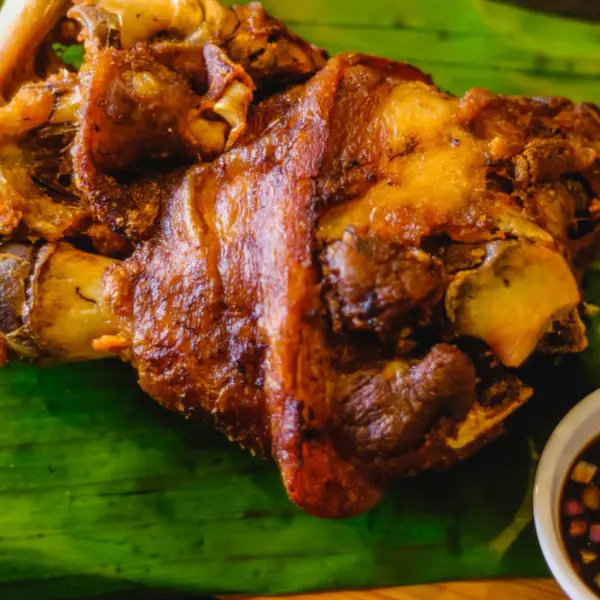
If you’re a fan of Crispy Pata, the delicious Filipino dish made with deep-fried pork knuckles or hocks, then you’re in for a treat! We’ve curated a list of the…
-

If you’re looking for a comprehensive and budget-friendly meal prep plan, then look no further than our One Month Ulam Plan with Grocery List for October 2023! This plan is…
